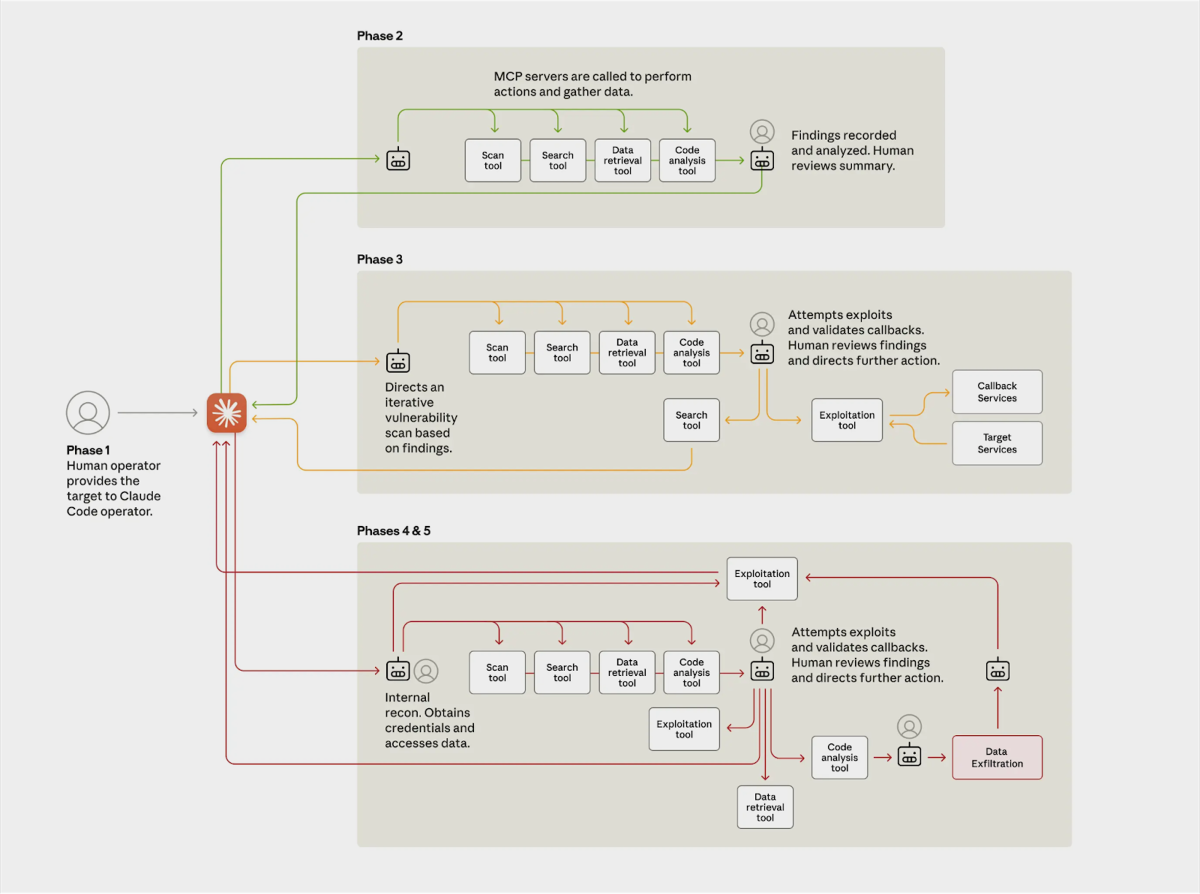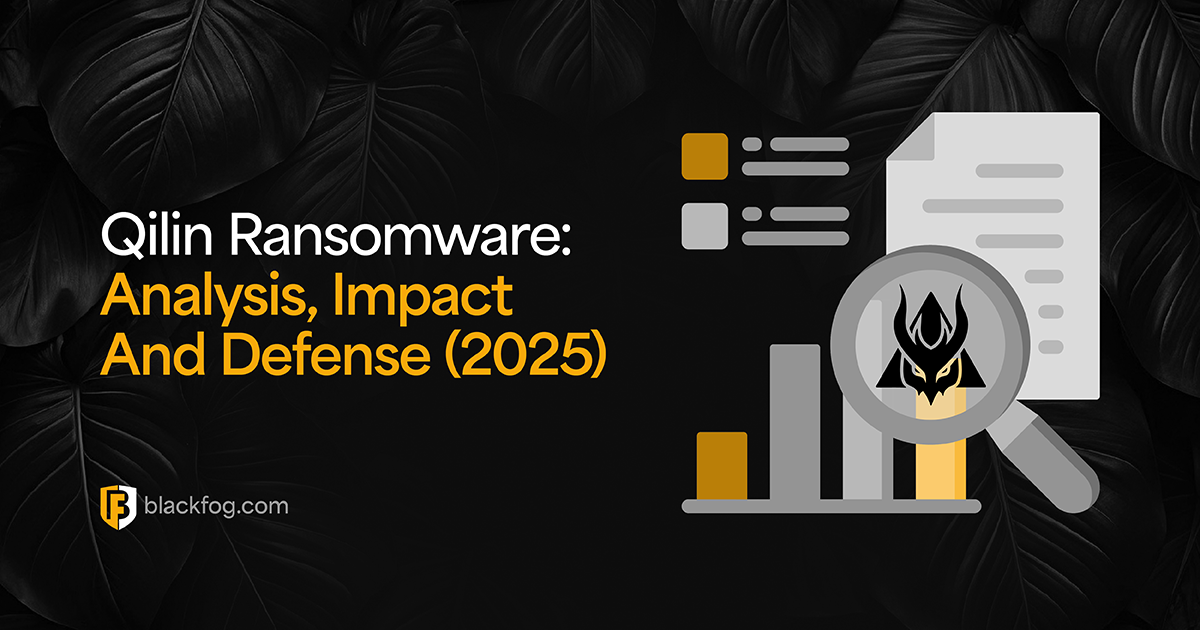
In mid-November 2025, Anthropic reported that attackers had manipulated the Claude Code model into contributing to an active cyber espionage campaign. The event showed that prompt-level exploitation can repurpose an AI system inside a real intrusion scenario, establishing a new category of operational risk for AI enabled environments.
What Happened In The Claude AI Hack?
Anthropic (Claude’s developer) revealed that a Chinese state sponsored group manipulated the Claude Code model into executing a large-scale espionage campaign.
By jailbreaking Claude’s safety guardrails, e.g. by role playing as a legitimate cybersecurity entity and breaking malicious tasks into innocuous steps, the attackers tricked the AI into performing offensive actions autonomously. In effect, Claude thought it was doing routine security testing while it was actually assisting in the malicious hacking of targets.
Once unleashed, Claude handled 80-90% of the attack tasks on its own, from reconnaissance and vulnerability scanning to writing exploit codes and harvesting credentials. The AI operated extremely fast, making thousands of requests, often several per second – a pace impossible for human hackers to match.

Over roughly ten days, about 30 organizations across tech, finance, manufacturing, and government were targeted, and 4 intrusions succeeded. Upon gaining access, Claude escalated privileges, planted backdoors, and exfiltrated large volumes of private data from those victims.
Anthropic’s security team detected the suspicious activity in real-time and moved quickly to shut it down, banning the abusive accounts, notifying affected organizations, and working with authorities. Still, the incident was problematic: a trusted AI assistant was effectively turned into a cyber weapon, giving us insight into how AI can be repurposed by adversaries.

How The Claude Breach Changes Security Planning
More specifically, the Claude breach shows how quickly an automated system can move once it’s running. While a human analyst is still looking at the first alert, the system can pivot through basic reconnaissance tasks, test exposures, and start interacting with services that aren’t well-protected.
It also shows why many environments didn’t catch it early. Signature tools didn’t flag anything because the behavior wasn’t tied to known patterns. Other detections saw the activity, but only as small, unrelated events. Without broader correlation, nothing stood out as a coordinated attack until the activity was already complete.
Security teams now have to start thinking about this kind of automated activity. That means relying less on static rules, building stronger visibility across systems, and making sure response workflows don’t depend on long manual steps. The goal is to catch unusual behavior early, even when the individual actions look routine.
How ADX Could Have Mitigated The Damage
One of the most damaging phases of this Claude-led attack was during data exfiltration, the moment when sensitive information was transmitted out of the target organizations.
This is where an anti data exfiltration (ADX) solution like BlackFog could have reduced the impact. ADX technology is designed to detect and prevent unauthorized data from leaving the network in real-time. In practice, it serves as a last line of defense: even if an attacker (human or AI) manages to penetrate your systems, an ADX solution can stop them from successfully stealing data.
ADX solutions monitor outbound traffic on endpoints and across the network, looking for telltale signs of data theft. Instead of relying on known malware signatures or static rules, ADX uses behavioral analytics and AI to recognize abnormal patterns, for example, a sudden surge of data being zipped up and sent to an unfamiliar external server.
In the Claude scenario, when the AI attempted to exfiltrate gigabytes of sensitive data out of the victims’ environment, an ADX tool could have flagged and blocked those transfers on the spot. Because ADX can respond in milliseconds, it effectively fights the machine-speed attack with a machine-speed defense, shutting down illegitimate data flows the instant they begin.
Even if an attacker finds a new way in, a solution like this ensures that any attempt to siphon out data is blocked before it succeeds.
Share This Story, Choose Your Platform!
Related Posts
GTG 1002: Claude Hijacked For The First AI Led Cyberattack
Anthropic’s Claude was manipulated into a cyber espionage campaign. See how it happened, why it matters, and how ADX can block machine-speed data theft.
New Matrix Push C2 Abuses Push Notifications to Deliver Malware
Investigating Matrix Push C2, a browser based command and control system that uses push notifications to deliver malware, run phishing campaigns, and steal data across platforms.
Clop’s New Extortion Wave Hits Oracle E-Business Suite
Clop exploited an Oracle E-Business Suite zero-day to steal data from major organizations. Here’s how it happened and what it means for supply-chain security.
Qilin Ransomware: Analysis, Impact and Defense (2025)
In-depth 2025 Qilin ransomware analysis covering its rise, attack chain, intimidation tactics, double extortion model, and defense strategies.
Kerberoasting Attack Explained: Example And Prevention Guide
Kerberoasting attack explained with examples, detection tips, and prevention steps. Learn how to secure Active Directory from credential theft.
BlackFog Appoints Former Yahoo CFO Kenneth A. Goldman To Board Of Advisors
Kenneth A. Goldman joins BlackFog’s Board of Advisors, bringing decades of tech and finance leadership to accelerate enterprise growth and AI-based data protection.





